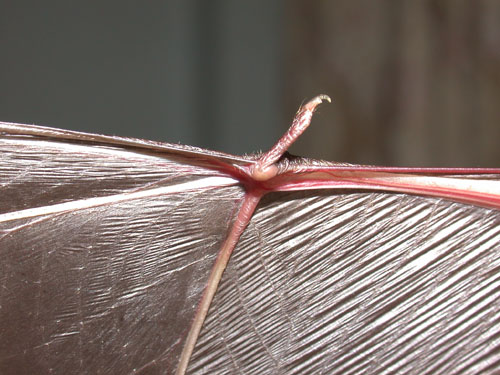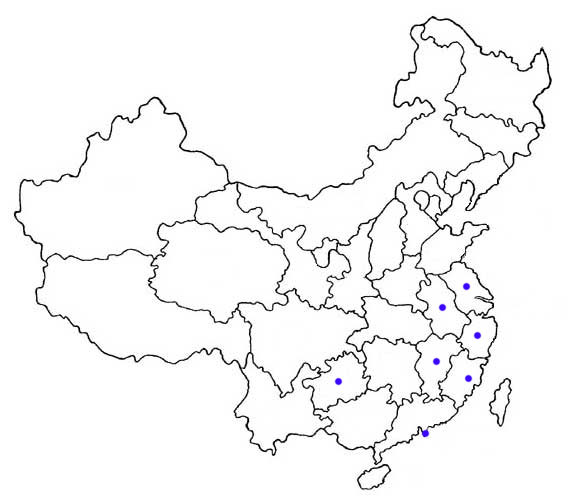Myotis fimbriatus
Fringed long-footed Myotis
Maotui Shu'erfu
Morphological description Life history Distribution Habitat Roost sites and roosting patterns Emergence and flight pattern Foraging behaviour Echolocation calls Status and protection

Morphological Description
· Fur short and thick, brown, pale whitish ventrally.
· A female captured in Yunnan 2003 had ears 14.4 mm, forearm length 43.2 mm, mass = 9.9 g. Measurements given by Smith & Xie (2008) are forearm length = 37-40mm..
· The hind foot length is more than half the tibia length, and the wing membrane attaches at ankles. The bat we caught showed pads at the base of the thumb.
Life history
· Little known
Distribution
The species is apparently endemic to China. We caught one in a cave at Mile, Yunnan Province. Smith & Xie (2008) show it distributed over south, central and south east China. The Chinese distribution is shown by the dots on the map (as given by Wang, 2003). Type locality is Xiamen (=Amoy), Fujian Province (= Fukien ). The map indicates the distribution areas at provincial level.

Habitat
· Little known.In Yunnan, the surroundings close to where we caught the bat include agricultural lands, ancient and modern buildings, watercourses, as well as secondary forests in mountainous areas (altitude approximately 1,500 metres).
Roost sites and roosting behaviour
· Roosts in caves.
· Emergence and flight pattern
· Little known.
Foraging behaviour
· Not known, but large feet suggests it trawls insects from the water surface.
Echolocation calls
· Unknown.
Status and protection
· There is no estimation of population size for China.
· The fringed long-footed myotis is listed as RL-VU A4cd; B1ab (1,11,111) in China (Smith & Xie 2008).
· Caves should be protected as their habitats.
